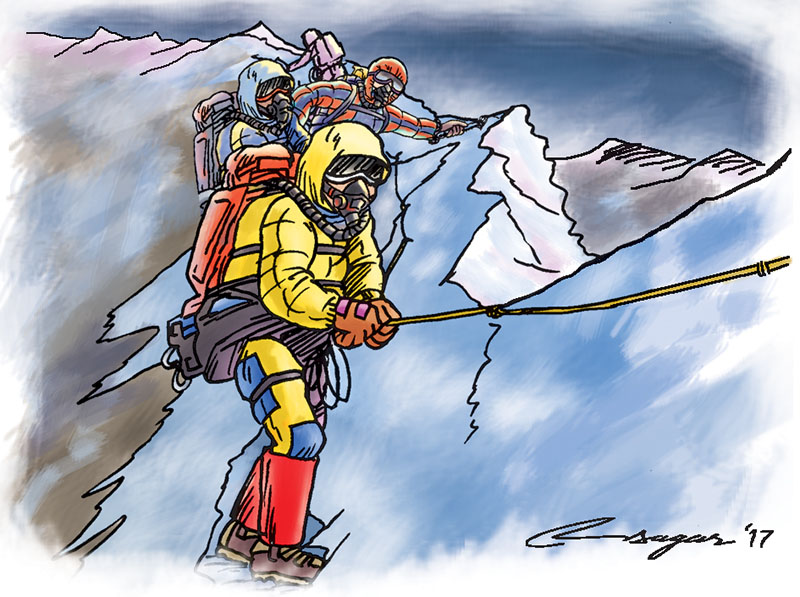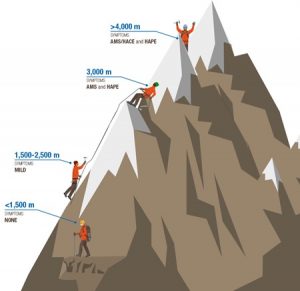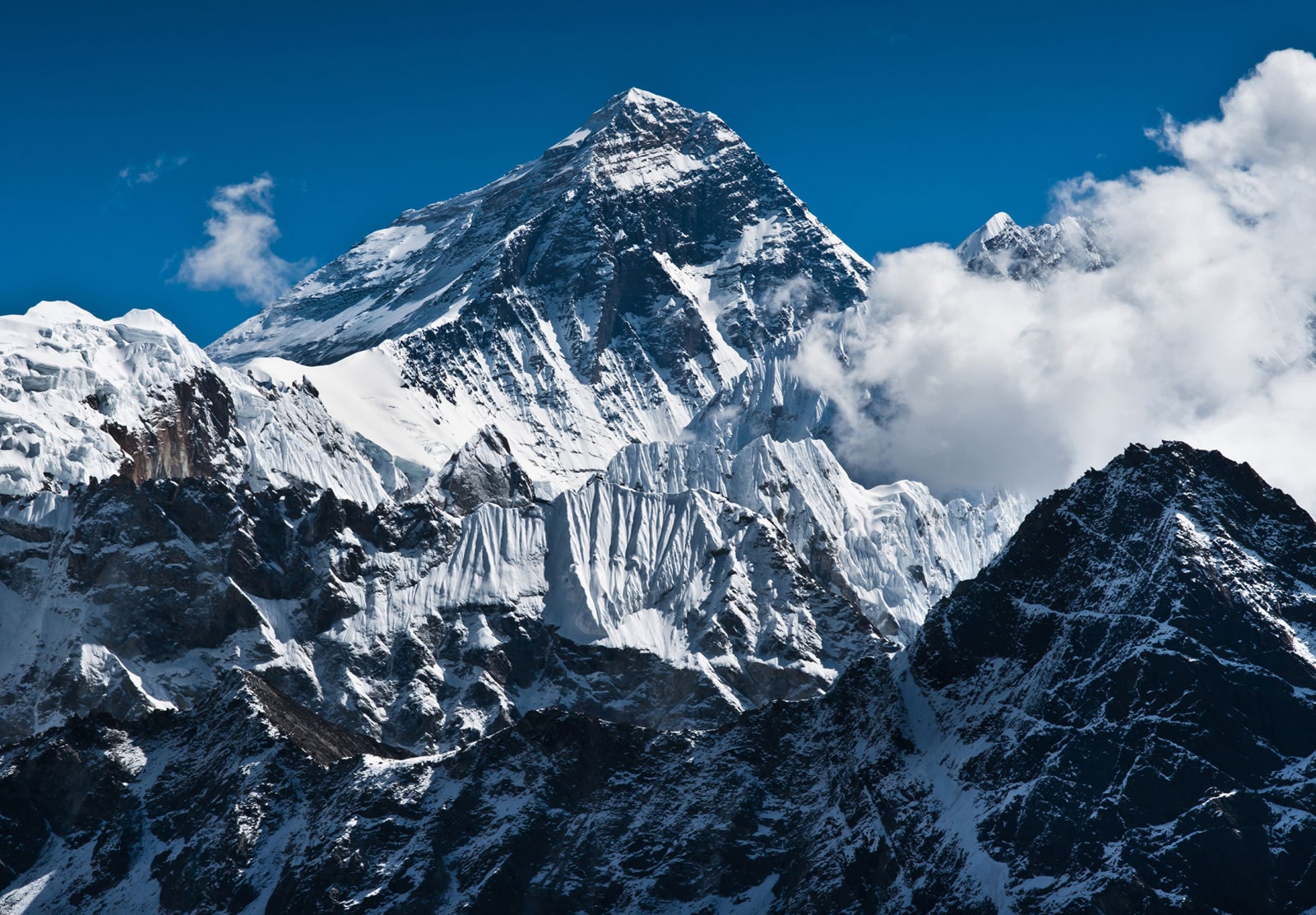
Mountaineers and climbers have been using all kinds of different drugs and supplements for centuries to help their minds, and bodies overcome the extreme climate conditions and extensive physical toll that comes with venturing into high altitudes. One of the most notable being Hermann Buhl, a legendary climber who credits the survival of his then impossible ascent of Nanga Parbat in 1953 to a multitude of different drugs, including methamphetamine pills, or Pervitin, for energy boosts in life-threatening situations and Padutin, a blood flowing agent that helps prevent frostbite. Buhl is widely considered one of the best alpinists and climbers of all time.
However, nowadays, many renowned mountaineers and climbers, even the most legendary who idolize Buhl, consider anything more than a cup of coffee to be “cheating.” One of these people is Reinhold Messner, the Michael Jordan of climbing; he made the first-ever solo ascent up Everest, and he was the first to make the ascent without supplemental oxygen. He was also the first climber to ascend all fourteen peaks over 8,000 meters (~26,000 feet) above sea level. Although Messner referred to Buhl as “a classic mountaineer without equal,” he also said “the climber who doesn’t rely on his own strength and skills, but on apparatus and drugs, deceives himself.” Steve House, a renowned professional climber and mountain guide, considers even a supply of oxygen as doping and declared “not one ascent made with Os counts in my book.”
One of the most common and widely accepted drugs used by climbers helps prevent hypoxia, or lack of oxygen, which causes high-altitude pulmonary edema (HAPE), a type of altitude sickness that is the most common cause of death related to high altitude. HAPE can occur in two forms: one in acclimatized lowlanders who rapidly ascend to altitudes greater than 2,500- 3,000 meters (~8,000- 10,000 feet) and another in high landers returning from a temporary stay at a lower altitude.

What is this miracle drug? Viagra. Yes, you read that correctly. Sildenafil is the active agent in Viagra and is not only a treatment for erectile dysfunction but also one for altitude sickness. How does it work? A biochemical similarity exists between the penis and lungs – both contain large amounts of the enzyme phosphodiesterase. Sildenafil blocks this enzyme and allows more blood to circulate in both areas. Viagra was initially synthesized and studied to treat hypertension (high blood pressure) and angina pectoris (chest pain associated with heart disease). Pfizer, the pharmaceutical giant that owns Viagra, discovered sildenafil’s erectile dysfunction benefits on accident while researchers tested the medication.
A 2003 study on Mount Everest was performed to see if sildenafil affected altitude sickness in climbers. Seven climbers were administered sildenafil, and seven other climbers were given a placebo at random times. According to the Los Angeles Times, “The study reported that the sildenafil reduced high pressure in the lungs’ blood vessels and increased maximum exercise capacity at sea level and high altitude.” The results were outstandingly positive, and lead researcher Friedrich Grimminger concluded that the drug reduced arterial pressure and improved oxygen transport. However, although it demonstrated overwhelming success, Dr. Grimminger has stressed that the drug would not receive regulatory approval as a treatment for altitude sickness until worldwide tests were completed. Viagra was initially invented to treat various cardiovascular problems but was only licensed to treat impotence at the time.
In 2005, the Food and Drug Administration approved Pfizer’s new drug Revatio for the treatment of pulmonary arterial hypertension. Revatio is basically just a repackaged version of Viagra’s key ingredient: sildenafil. So, the FDA recognizes the effectiveness of sildenafil to treat altitude sickness. However, does this mean it’s justified to take while climbing to enhance performance and reach new limitations? Is it okay to take while climbing at all or should it only be taken when someone is experiencing altitude sickness? Either way, I think it’s safe to say that sildenafil, or Revatio, is something you should have if you plan on adventuring at extremely high altitudes, just in case.
There is a large divide amongst climbers who believe that it is perfectly ethical to use prescription drugs and supplements while climbing and others who believe that using even an oxygen supply at extremely high altitudes is considered “cheating”. If a climbing record is set while under the influence and assistance of prescription drugs and supplements, should it be considered legit or should that person be stripped of their climbing titles and achievements like any other athlete who uses performance-enhancing supplements? Can the two even be compared when in one situation a climber is risking their life on the side of a mountain and in the other athletes are just playing a game for peoples’ entertainment? As opposed to just enhancing one’s performance during a game, as is the scenario with most athletes who take supplements, whether or not you supplement could be a life-or-death decision when you are suffering from HAPE and running out of breath and energy at 29,000 feet in the air while scaling the side of a Mount Everest.

Er well of course not.
Whaterever it takes to be and stay a real ‘hard’man!!